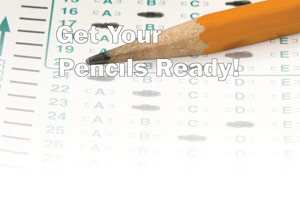There are more than 400,0000 professionals who hold ASE certifications across a variety of areas. These certified pros work in every segment of the automotive service industry: car and truck dealerships, independent garages, fleets, service stations, franchises, and of course, parts stores. Of that, more than 42,000 parts professionals are currently certified in one of ASE’s parts specialist tests, with the vast majority having the P2 certification.
A little about the testing procedure
 Prospective candidates register for and take one or more of ASE’s 40-plus exams. The tests are grouped into specialties for automobile, medium/heavy truck, truck equipment, school bus, and collision repair technicians, as well as engine machinists, alternate fuels technicians, parts specialists, auto service consultants and collision damage estimators.
Prospective candidates register for and take one or more of ASE’s 40-plus exams. The tests are grouped into specialties for automobile, medium/heavy truck, truck equipment, school bus, and collision repair technicians, as well as engine machinists, alternate fuels technicians, parts specialists, auto service consultants and collision damage estimators.
Automobile parts professionals normally take the P2 exam, but there are others:
• Medium/Heavy Truck Dealership Parts Specialist Test (P1);
• Medium/Heavy Truck Aftermarket Brake Parts Specialist Test (P3);
• General Motors Parts Consultant Test (P4);
• Medium/Heavy Truck Aftermarket Suspension and Steering Parts Specialist Test (P9).
The following pages cover much of the technical information that appears on the P2 test. To remain certified, those with ASE credentials must be retested every five years.
Paper and pencil tests are conducted twice a year at more than 750 locations around the country and are administered by ACT, known for its academic and occupational testing programs. Paper tests (both first time and recertification) cost $27. In addition, selected tests are offered in a computer-based testing (CBT) format at 200 sites for two five-week periods each year. CBT is offered in the winter and summer at about 200 test sites nationwide. CBT offers scheduled appointments and instant test results. The registration fee for CBT is $70 per technician and regular tests cost $37 each. Advanced level tests fees are $74 per test.
Each exam stresses knowledge of job-related skills. The tests are no cinch to pass; approximately one out of three test takers fails. Visit www.ase.com for more information.
What happens at the test center and what are some test-taking tips?
You will be required to show a current (unexpired) government- or school-issued photo ID when you check in to take your tests. The name you use to register must match the name on your current photo ID.
Try to be well rested. Arrive early enough to park and find the appropriate building and room location. You should report for check-in by 6:45 p.m. Bring your admission ticket, photo ID, three or four soft-lead pencils (No. 2) and an eraser with you. Books, calculators, and other reference material will not be permitted in the test room.
(Exception: English-Foreign dictionaries, English/Spanish Glossary, etc., which will be inspected before and after testing.) Testing is scheduled to begin at 7 p.m., but may be delayed to complete check-in.
You will receive test book(s) for those test(s) printed on your admission ticket and an answer folder. Once you are seated, the supervisor will explain how to fill out the answer folder.
The test sessions are timed. You will have four hours to complete your tests. If you finish early, you may leave during specified dismissal periods. Use a watch to pace yourself. If a question is difficult, mark the answer that you think is correct and put a checkmark or note in the test book margin beside that question. Then go on to the next question. When you have finished the test, you may have time to go back to those questions you have marked.
It is to your advantage to answer every question. Your score will be based on the number of correct answers that you give.




